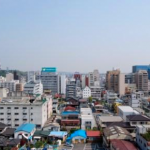JAPAN CITIES
Japanese society has become largely urban, with almost 95% of the population living in cities. There are 30 Japanese cities of about 500,000 inhabitants, which is remarkable in terms of surface for such a small country. As a comparison, the area of the United States is 25 times the area of Japan. But the U.S. have “only” 35 cities of about 500,000 inhabitants. That explains why Japanese cities feature a high population density and most people live in small places.
Our schools are located in different cities, from the lively capital of Tokyo to scenic Kyoto. From Nagano to Osaka to Fukuoka, we have close partnerships with different schools in different location so we can cater the preference of our students.
When choosing your language school, the city should be one of the main criteria. So we recommend that you spend sufficient time documenting yourself and learning about Japanese cities, their climate, their unique features, their centers of attractions, the access to and from other places in Japan and abroad, etc, depending on your own centers of interests and objectives. Always ask yourself if the place is the one you can stay in for the rest of your language study.
Studying in Tokyo will obviously enable you to get more opportunities if you intend to look for a job, but studying in Okinawa will provide you with a unique setting, and closer to nature.
As we have schools in various places in Japan, here is an overview of the main Japanese cities, and what makes each of them special.
























